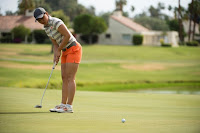My Books of 2021
Its been another year of joyful reading and at the close of the year, I list the best books I have read. These books are not necessarily published this year but given the volume that I go through and the criteria I use to select the books, there is a good chance that some of these will appeal to you. Admittedly, I only read popular books, as there is nothing worse than picking up a book, investing time in it, and then deciding whether to finish the book or put it down. As such, the base criteria is that all books I read have a 4 or more rating on Goodreads or is something that comes highly recommended by a fellow reader. Sometimes even this fails as we all have our moods and inclinations. But by and large, this gets me by.
Of the 84 books I have read this year, these are my Top 5 Fiction.
The Thursday Murder Club - Richard Osman (2020) A story of a set of septuagenarians, living in a luxury retirement home in Kent, who set about solving murder mysteries. The police sometimes gets in their way, but they cleverly work around them. Part comedy, part serious. Written by BBC personality Richard Osman. His follow up book, "The Man who Died Twice", outsold this debut novel, and is reputed to be even better. I will get to this in 2022.Anxious People - Fredrik Backman (2019). A comedic story of a bank robbery turned into a hostage crisis set in Sweden. Only thing is that the bank robber never wanted to be one, and is an even worse hostage taker. The victims end up developing a relationship with each other, and ends up helping the hostage taker. They devise a novel way to blindside the police, so as to let everyone go home free of any trouble. Including the bank robber.
The Count of Monte Cristo - Alexandre Dumas (1846). I never read this book in my younger days, and I finally had to pleasure of understanding why it is hailed as a classic. This story is set in 19th Century France, and is a story of betrayal, heartbreak and revenge. The fact that it remains readable almost two centuries on, is testament to the story telling powers of Alexandre Dumas and that human nature does not change. I can hear Antoine de Carbonnel telling me to read "The Three Musketeers". Perhaps in 2022.
Dune - Frank Herbert (1965). I picked up this book in anticipation of the movie and it did not disappoint. Herbert must be credited for building a whole new universe in his head around the political themes of control and power. I found myself referring to fan sites to make sense of the landscape, machines and weapons that were introduced. These eventually came alive in the movie. And the movie is at best half way through the book only.
The Black and White Club : Illuminology - Peter Bergeron (2021) Written by a classmate of mine, this is a high pace thriller about law enforcement agents hunting down a criminal organization masquerading as a religious one in the South. It reads very much like a Tom Clancy novel. I finished this in three days which makes it very much a page turner. It hardly seems fair given that he worked on the book for over a year.
My Top 5 Non-Fiction are as follows.
A Promised Land - Barrack Obama (2020). Whatever your political leanings, it is useful to read the memoirs of the ex President of the United States. It is a story of decision making under stress, and of the horse trading that takes place in Washington. Obviously, not all the warts are disclosed, but it is sufficient for one to understand the challenges of being the most powerful man on the planet.
Being Mortal - Atul Gawande (2014). Probably the best book I have read this year. It is about growing old and dying and how this has changed over the last 100 years. It is also about the choices we make in our final years, the quality of life when old, and how to die with dignity. This book has won multiple awards, and the people I have recommended it to have universally said they were moved by it.
About Face - David H Hackworth (1989). This is the best war memoir to be published about the war in Vietnam. I would say that this is compulsory reading for all folks in uniform to learn about leadership, soldiering and how organizations can become dysfunctional if integrity is compromised. I felt sorry for Hackworth as he is one of the good guys that had to leave, having been forced out by Westmoreland.
Humankind : A Hopeful History - Rutger Bregman (2019). This is a truly delightful book written by a young Dutch sociologist and historian. The common view of human nature is that humans are intrinsically selfish and brutish. Without an overarching superstructure called the state, we would end up killing each other. Bregman spends the whole book calling this into question and relates stories that show this may actually not be the case. And if so, perhaps we are better of organizing ourselves differently. Interesting!
Many other books came close, but these were the ones that moved me. I hope that they do that for you too.






































